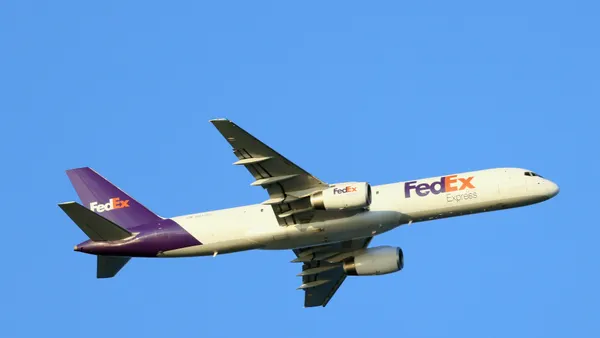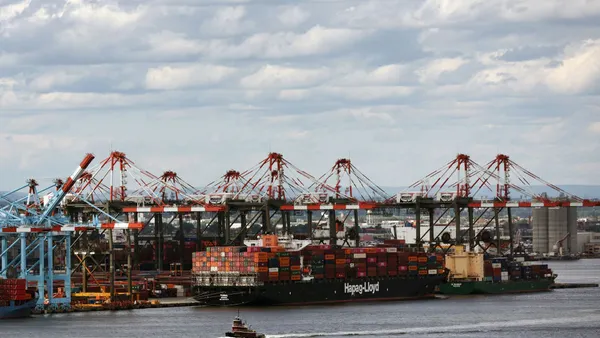Dive Brief:
- LateShipment.com, a logistics solutions provider, released a report finding more than 6% of 507,873 FedEx and UPS packages tracked between January and March 2019 were delayed, nearly 72% of which were delayed by at least a full day.
- Despite paying for priority, rush or next-day shipping services with the two major carriers, the faster the shipping time promised, the greater the chance a package would be delayed, the study found. FedEx Priority Overnight saw an average of almost 18% of parcels in the tracked group delayed and UPS' Next Day Air Saver service saw more than 11% delayed compared to an average of 2.63% and 4.3% respectively for their ground or two-day shipping options.
- According to a recent Capgemini study cited in the report, 48% of customers surveyed said they would choose a different retailer after having a negative delivery experience.
Dive Insight:
Shipping is the second-highest cost center for the 100 small to medium online retailers surveyed, according to the report. For retailers looking to streamline spending while meeting customer demands, conventional wisdom might suggest paying more for faster shipping to keep up with the competition and increase sales is a worthwhile investment. However, the data in the report showed consistently, across product categories including apparel, auto parts, food and toys, that faster shipping options were associated with increased instances of delays.
Ensuring on-time delivery can be crucial to a company's reputation and its bottom line, and late shipments could impact revenue, the cost of reshipping inventory and time spent addressing customer complaints.
"Express shipping options performing worse than ground shipping options is a fairly consistent trend across the industry," LateShipment.com CEO Sriram Sridhar told Supply Chain Dive via email. "This can be primarily attributed to express shipping having to function within a tighter time window from pickup to delivery and the kind of transportation methods involved. ... These shorter windows with short time padding on either end leave very little scope for recovery from mistakes, which results in a higher frequency of delays."
With ground shipments, carriers have more locations where they can make up time if there is a delay, Sridhar said. However, since next-day shipments are typically carried by air and there are fewer stops between an airport and the final delivery truck, it is significantly harder to recover from any setbacks along the way.
In addition to delays caused by transportation failures or inclement weather, the rise of e-commerce has made parcel volumes more challenging to predict, particularly during peak seasons. This can overwhelm carriers and also cause delays. Amazon experienced this during its most recent Prime Day event, during which some customers reported receiving packages late amid record-breaking sales on the platform.
When it comes to solutions, the report found only 6% of the 100 companies surveyed said they have visibility into their logistics network. As a result, it suggests implementing logistics "control towers," a technology platform that "acts as an intersection between your logistics provider, delivery and customer," to integrate order fulfillment and transportation data. This can help firms identify where delays are most likely to occur, for what product types or delivery locations, and make decisions about shipping modes that can optimize cost and customer service.
Recently, P&G used this tactic to create a "ready for anything supply chain." To ensure operational continuity during disruptive events, the company created a control tower that centralized decision making about prioritizing order shipments and how to reroute them if a link in the chain went down. The digital platform it used to achieve this created a virtual map of P&G's network and enabled the company to run delivery scenarios in hours opposed to days or weeks, Bob Herzog, P&G's associate director of planning, previously told Supply Chain Dive. As a result, P&G said it was able to maintain deliveries during recent natural disasters.














